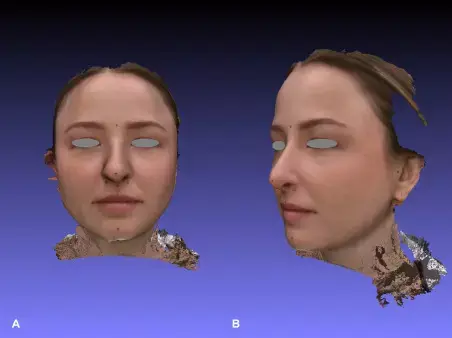- Home
- Medical news & Guidelines
- Anesthesiology
- Cardiology and CTVS
- Critical Care
- Dentistry
- Dermatology
- Diabetes and Endocrinology
- ENT
- Gastroenterology
- Medicine
- Nephrology
- Neurology
- Obstretics-Gynaecology
- Oncology
- Ophthalmology
- Orthopaedics
- Pediatrics-Neonatology
- Psychiatry
- Pulmonology
- Radiology
- Surgery
- Urology
- Laboratory Medicine
- Diet
- Nursing
- Paramedical
- Physiotherapy
- Health news
- Fact Check
- Bone Health Fact Check
- Brain Health Fact Check
- Cancer Related Fact Check
- Child Care Fact Check
- Dental and oral health fact check
- Diabetes and metabolic health fact check
- Diet and Nutrition Fact Check
- Eye and ENT Care Fact Check
- Fitness fact check
- Gut health fact check
- Heart health fact check
- Kidney health fact check
- Medical education fact check
- Men's health fact check
- Respiratory fact check
- Skin and hair care fact check
- Vaccine and Immunization fact check
- Women's health fact check
- AYUSH
- State News
- Andaman and Nicobar Islands
- Andhra Pradesh
- Arunachal Pradesh
- Assam
- Bihar
- Chandigarh
- Chattisgarh
- Dadra and Nagar Haveli
- Daman and Diu
- Delhi
- Goa
- Gujarat
- Haryana
- Himachal Pradesh
- Jammu & Kashmir
- Jharkhand
- Karnataka
- Kerala
- Ladakh
- Lakshadweep
- Madhya Pradesh
- Maharashtra
- Manipur
- Meghalaya
- Mizoram
- Nagaland
- Odisha
- Puducherry
- Punjab
- Rajasthan
- Sikkim
- Tamil Nadu
- Telangana
- Tripura
- Uttar Pradesh
- Uttrakhand
- West Bengal
- Medical Education
- Industry
Digital face scanning reliable method for measuring changes in vertical dimension of occlusion, suggests study

Digital face scanning is a reliable method for measuring changes in the vertical dimension of occlusion, as suggested by a study published in the Journal of Dentistry.
This study evaluated the reliability of a face scanner in measuring the vertical dimension of occlusion (VDO). Fully dentate volunteers (n = 20; mean-age = 30.0 ± 10.7 years) were recruited. Clinical facial measurements were obtained using a digital caliper and a face scanner (Obiscanner, Fifthingenium, Italy). The scans were imported into a mesh-processing software, and the distances were measured digitally. Measurements were obtained for each participant with the jaws positioned in maximal intercuspation (MI) and with increased vertical distances of 2, 4, and 6 mm. Vertical and horizontal measures were obtained using facial anatomical landmarks: Glabella (GL), Pronasale (PrN), Subnasale (SbN), inferior border of the right and left Alare, Labiale superius (Ls), right and left Cheilion (Ch), Soft Pogonion (SPg), right and left Tragus of the ear (Tr), for all selected vertical positions. Data analysis included intra-class correlation coefficient (ICC), pairwise comparison tests, Bland-Altman plots, and Passing-Bablok regression. Results: 120 VDO measurements (clinical=60, digital=60) were recorded by two independent evaluators. Mean differences between digital and clinical measurements ranged from 0.054 ± 0.14 mm to 0.203 ± 0.13 mm. All parameters were strongly correlated (r > 0.93; p < 0.001).
ICC estimates revealed excellent reliability, and the measuring procedure yielded the same results on repeated trials irrespective of the raters and measurement methods. Bland-Altman plots revealed a difference, between digital and clinical measurements, of 1.7 % for the vertical measurements. Regression analysis revealed no significant proportional difference between the two methods, so both can be used interchangeably. The findings of this study demonstrate that VDO can be measured accurately from face scans using 3D mesh-processing software and that even small changes in the VDO could be detected using the digital methods. Findings provide evidence about the reliability of a digital method for jaw relation registrations and may be applied towards incorporating this method into clinical workflows for computer-aided-design/ computer-assisted-manufacturing (CAD-CAM) dentures.
Reference:
Murali Srinivasan, Florentin Berisha, Innocenzo Bronzino, Porawit Kamnoedboon, Claudio Rodrigues Leles. Reliability of a face scanner in measuring the vertical dimension of occlusion, Journal of Dentistry, Volume 146, 2024, 105016, ISSN 0300-5712, https://doi.org/10.1016/j.jdent.2024.105016. (https://www.sciencedirect.com/science/article/pii/S0300571224001866)
Dr. Shravani Dali has completed her BDS from Pravara institute of medical sciences, loni. Following which she extensively worked in the healthcare sector for 2+ years. She has been actively involved in writing blogs in field of health and wellness. Currently she is pursuing her Masters of public health-health administration from Tata institute of social sciences. She can be contacted at editorial@medicaldialogues.in.
Dr Kamal Kant Kohli-MBBS, DTCD- a chest specialist with more than 30 years of practice and a flair for writing clinical articles, Dr Kamal Kant Kohli joined Medical Dialogues as a Chief Editor of Medical News. Besides writing articles, as an editor, he proofreads and verifies all the medical content published on Medical Dialogues including those coming from journals, studies,medical conferences,guidelines etc. Email: drkohli@medicaldialogues.in. Contact no. 011-43720751


